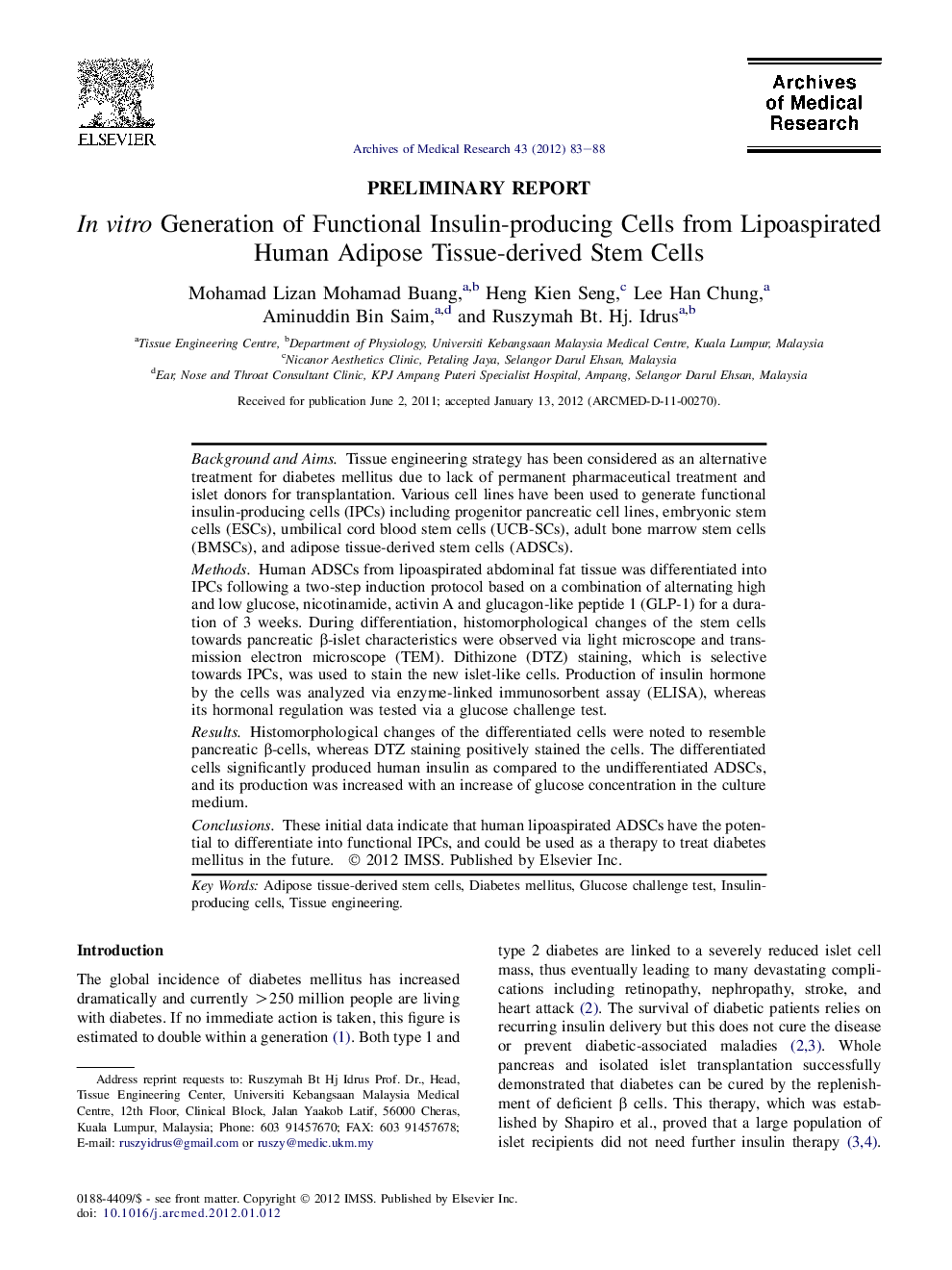| Article ID | Journal | Published Year | Pages | File Type |
|---|---|---|---|---|
| 3446975 | Archives of Medical Research | 2012 | 6 Pages |
Background and AimsTissue engineering strategy has been considered as an alternative treatment for diabetes mellitus due to lack of permanent pharmaceutical treatment and islet donors for transplantation. Various cell lines have been used to generate functional insulin-producing cells (IPCs) including progenitor pancreatic cell lines, embryonic stem cells (ESCs), umbilical cord blood stem cells (UCB-SCs), adult bone marrow stem cells (BMSCs), and adipose tissue-derived stem cells (ADSCs).MethodsHuman ADSCs from lipoaspirated abdominal fat tissue was differentiated into IPCs following a two-step induction protocol based on a combination of alternating high and low glucose, nicotinamide, activin A and glucagon-like peptide 1 (GLP-1) for a duration of 3 weeks. During differentiation, histomorphological changes of the stem cells towards pancreatic β-islet characteristics were observed via light microscope and transmission electron microscope (TEM). Dithizone (DTZ) staining, which is selective towards IPCs, was used to stain the new islet-like cells. Production of insulin hormone by the cells was analyzed via enzyme-linked immunosorbent assay (ELISA), whereas its hormonal regulation was tested via a glucose challenge test.ResultsHistomorphological changes of the differentiated cells were noted to resemble pancreatic β-cells, whereas DTZ staining positively stained the cells. The differentiated cells significantly produced human insulin as compared to the undifferentiated ADSCs, and its production was increased with an increase of glucose concentration in the culture medium.ConclusionsThese initial data indicate that human lipoaspirated ADSCs have the potential to differentiate into functional IPCs, and could be used as a therapy to treat diabetes mellitus in the future.
